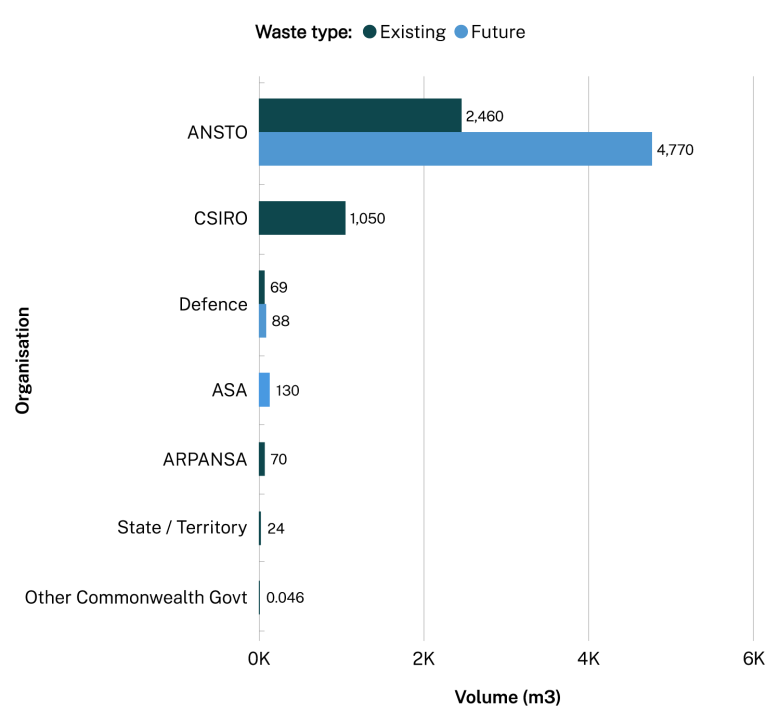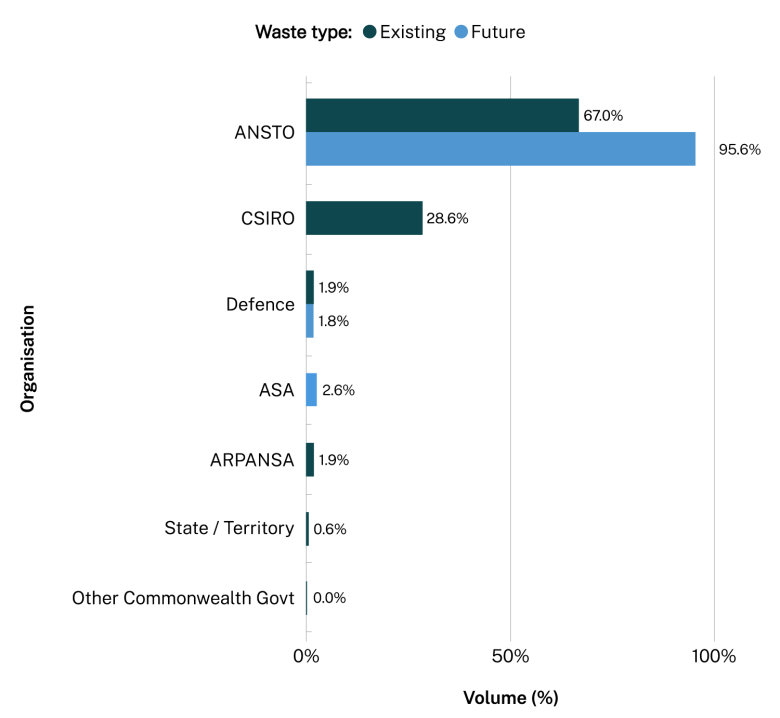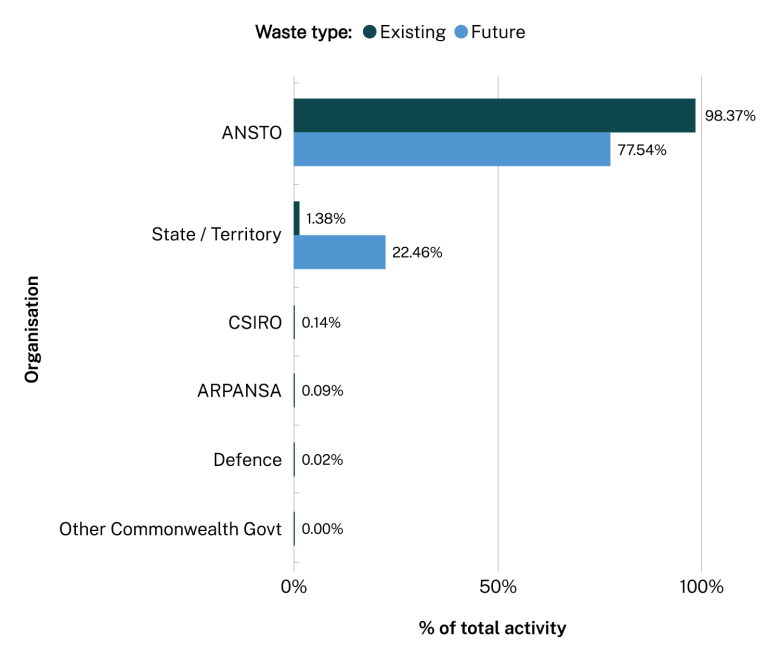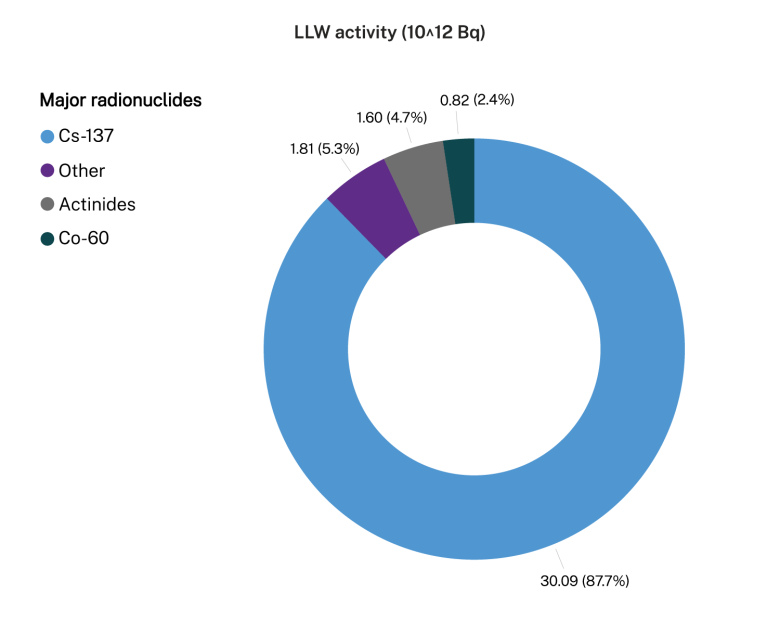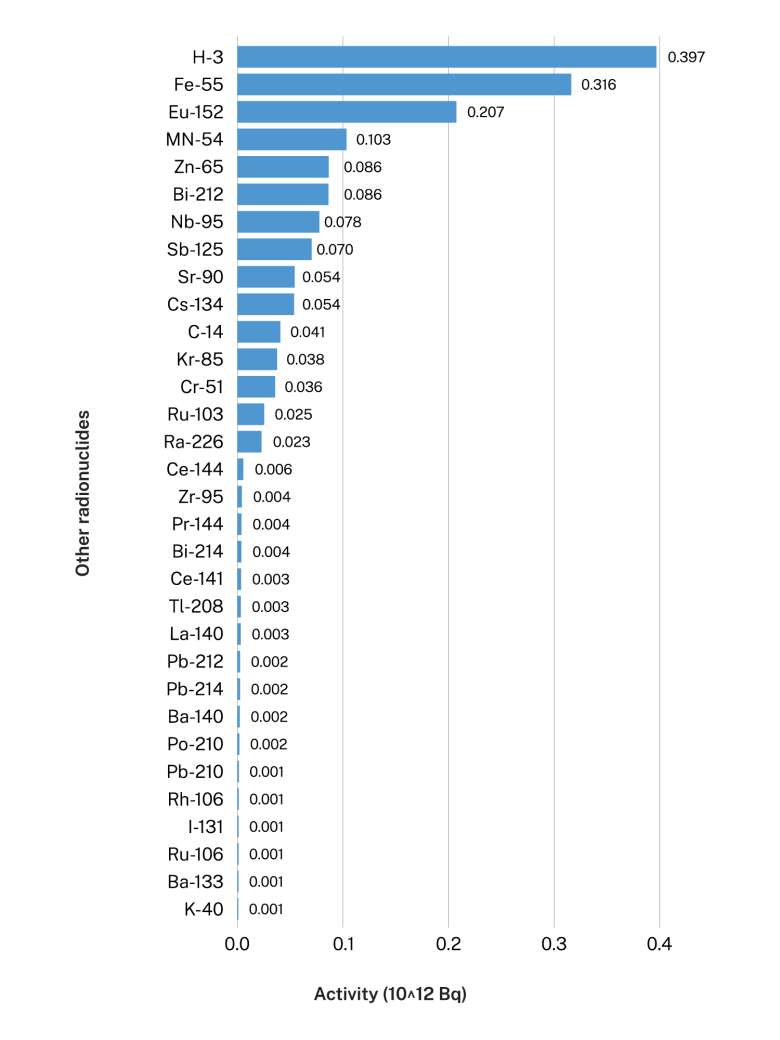This waste emits small amounts of radioactivity. It usually needs minimal shielding during handling and transport and is packed in steel drums for storage. The waste may be mixed with cement or compacted before disposal.
Examples include gloves, gowns and clothes used when producing nuclear medicines and conducting nuclear research.
Volumes
These are waste volumes before applying future waste conditioning or packaging that disposal may require.
The total numbers in Table 3 are slightly different from Table 1 because we have limited the numbers to 3 significant figures.
| Organisation / group | Existing | Future | Total |
|---|---|---|---|
| ANSTO | 2,460 | 4,770 | 7,230 |
| CSIRO | 1,050 | - | 1,050 |
| Defence | 69 | 88 | 157 |
| ARPANSA | 70 | - | 70 |
| ASA | - | 130 | 130 |
| Other Commonwealth government | 1 | - | 1 |
| State and territory government and regulators | 24 | - | 24 |
| Total | 3,674 | 4,988 | 8,662 |
Where volume is less than 1m3, we have rounded up to 1m3.
| Organisation / group | Existing | Future | TBD | Total |
|---|---|---|---|---|
| ANSTO | 2,307 | 10,665 | - | 12,972 |
| CSIRO | 44 | 40 | 84 | |
| Defence | 70 | 88 | 158 | |
| ARPANSA | 66 | - | 66 | |
| Hospital | - | 2 | 1 | 3 |
| Other Commonwealth government | 2 | - | 2 | |
| Research and education | 1 | 1 | 2 | |
| Total | 2,490 | 10,796 | 1 | 13,287 |
Figure 2 and Figure 3 show the volumes of LLW held by the different organisational groups, and what proportion each organisational group holds of the total inventory of LLW. ANSTO and CSIRO hold the majority of LLW waste.

